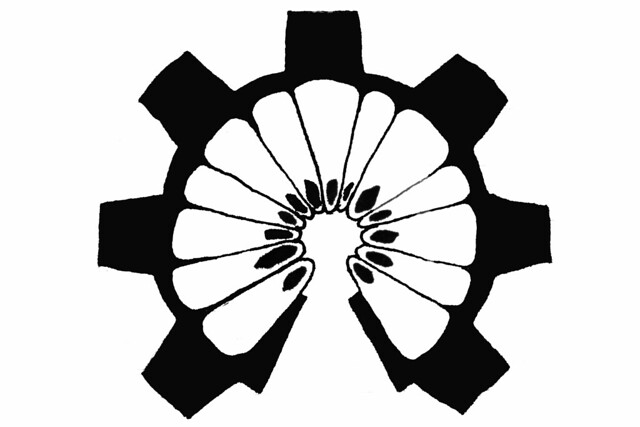Share your fruits with their seeds

Text by Bruno Munari from Design as Art, first published 1966
Orange
This object is made up of a series of modular containers shaped very much like the segments of an orange and arranged in a circle around a vertical axis. Each container or section has its straight side flush with the axis and its curved side turned outwards. In this way the sum of their curved sides forms a globe, a rough sphere.
All these sections are packed together in a container that is quite distinctive both as to its material and its colour. Its outside surface is fairly hard, but it has a soft internal lining that serves as padding between the outer surface and the sections packed inside. The material is in origin all of the same type, but it is suitably differentiated according to its function.
Each section or container consists of an envelope of plastic-like material large enough to contain the juice but easy to handle during the dismemberment of the global form. The sections are attached to one another by a very weak, though adequate, adhesive. The outer or packing container, following the growing tendency of today, is not returnable and may be thrown away.
The form of each section exactly follows the disposition of the teeth in the human mouth, so that once a section has been successfully extracted from the outer container it may be placed between the teeth, and a light pressure is enough to burst the envelope and extract the juice. Apart from juice the sections generally contain a small seed from the same plant that produced the fruit. This is a small free gift offered by the firm to the client in case the latter wishes to start a production of these objects on his own account. We draw your attention to the fact that while no economic loss is incurred in this gift, it gives rise to an important psychological bond between producer and consumer: few if any of the consumers will actually start growing orange trees, and yet this entirely altruistic concession (the idea of being able to do it if he wishes) frees the consumer from his castration complex and establishes a relationship of reciprocal trust.
The orange is therefore an almost perfect object in which one may observe an absolute coherence of form, function and consumption. Even the colour is exactly right. It would be quite wrong if such an object were blue.
The only concession to decorativeness, if we may say so, is the highly sophisticated material of the outer container, treated as it is in such a way as to produce the ‘orange skin’ effect. Perhaps this is done to remind the consumer of the juicy pulp to be found inside the plastic containers. Anyway, a minimum of decoration must be allowed for, especially when as justified as it is in this case.